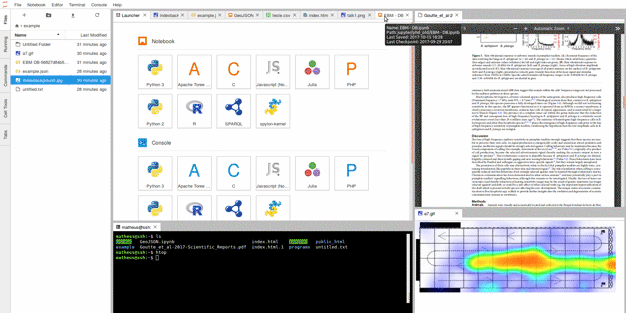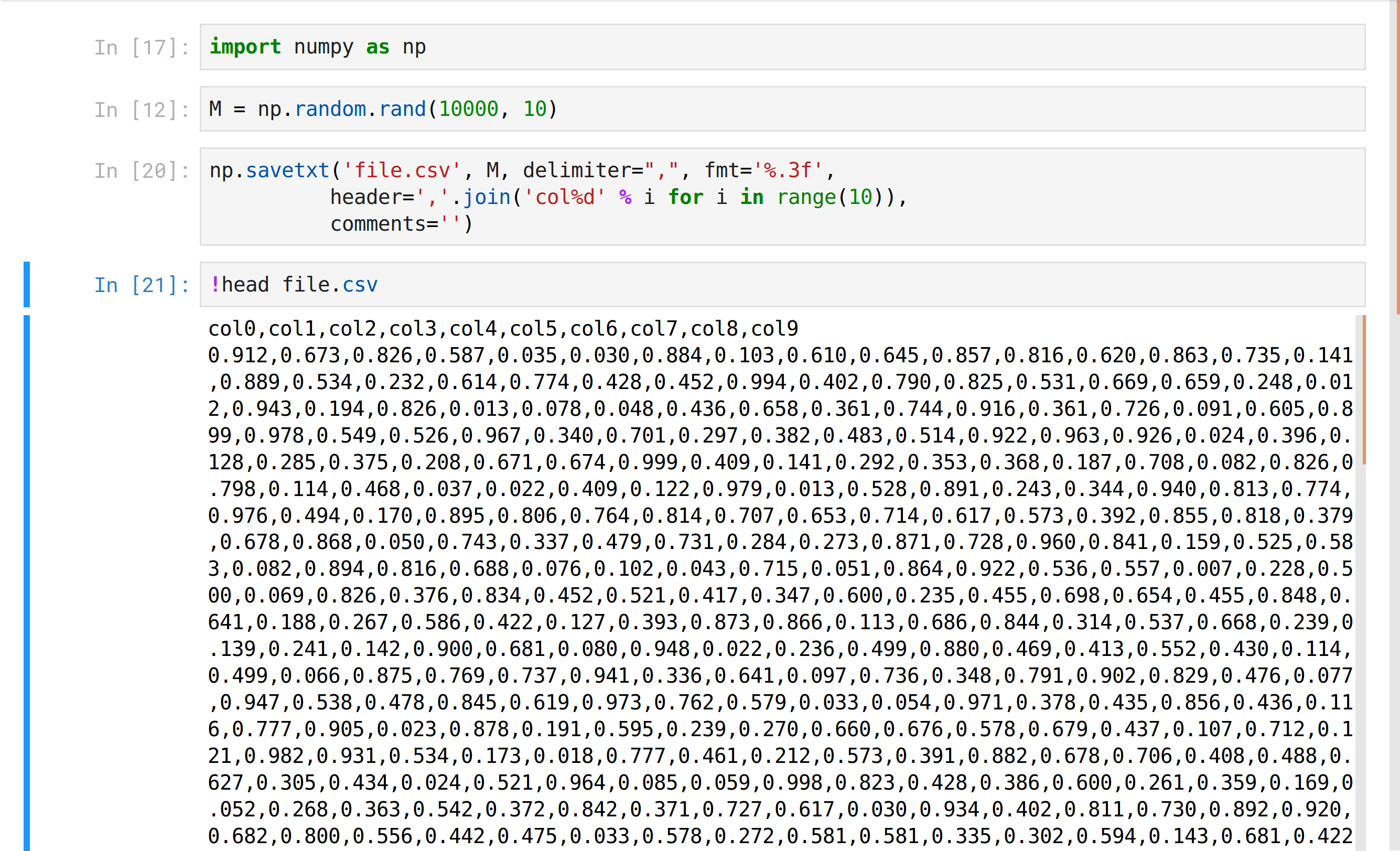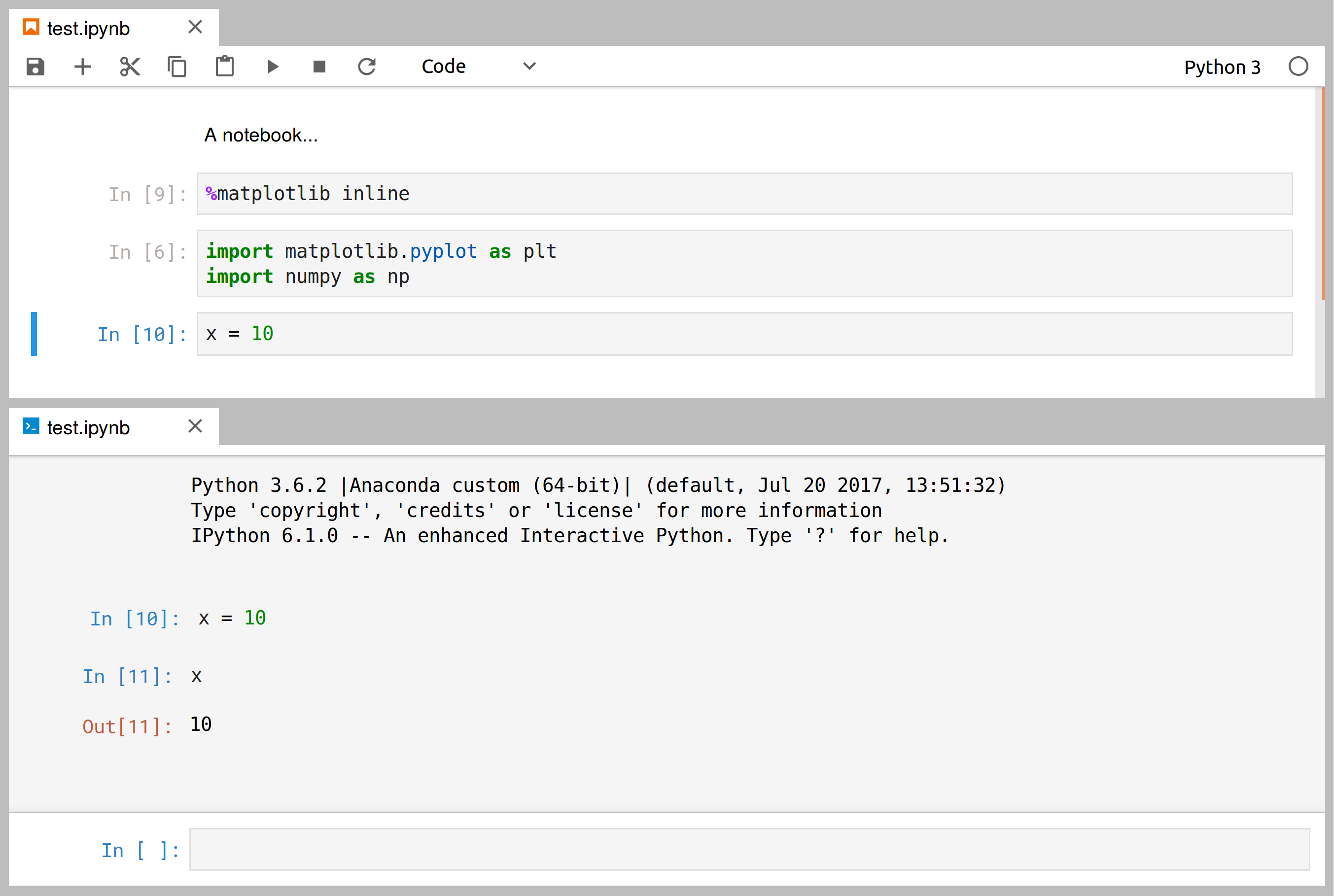

- #Jupyterlab text editor how to#
- #Jupyterlab text editor install#
- #Jupyterlab text editor full#
- #Jupyterlab text editor code#
#Jupyterlab text editor code#
The notebook is saved automatically every two minutes, and it can be saved manually by clicking the floppy disk symbol in the toolbar, or by hitting Ctrl + s.īoth input and output cells are saved, so any plots that you make will be present in the notebook next time you open it, without needing to rerun the code cells.

Or some notes that we’re planning on moving later. This can be handy if we have a long code cell, We can also click this blue bar to the left to collapse and expand the output and input. Until the current one finishes (the delay is only noticeable for longer computations). To indicate that Python is busy and won’t be able to execute new cells The counter symbol changes to an * when a computation is running, So that you are aware if cells have been run out of sequential order. This counter keeps track of in which order the cells were executed, You might have noticed that there is a little counter on the left of each cell. Its interface is built largely using Javascript and Typescript, The loading animation illustrates the planet Jupiter orbited by three of the moons Gallelei identified. This is the traditional interface for working with Jupyter Notebooks,Īnd to instead access JupyterLab, you can change the part of the URL after the final forward slash that says tree? to lab. Once logged in, you will see list of files, Once you log in, a server will be started for you somewhere in the cloud, e.g.
#Jupyterlab text editor install#
It can be rendered in a browser without the need to install anything,


Thanks to that JupyterLab is built entirely using web technologies, The name is an astronomical term referring to the alignment of celestial objects,Īnd here it is used to represent the alignment of text, math, and code inside Jupyter notebooks. To bring JupyterLab to researchers, educators and innovators across Canada. Syzygy.ca is a project of the Pacific Institute for the Mathematical Sciences, Compute Canada and Cybera The PIMS version lets you explore the JupyterLab interface, but does not include all the extensions and package we will cover in this workdshop. If you don’t have UBC CWL, you can instead use this address and login with a Google account. To try JupyterLab, use your web browser to visit the following address and login with your CWL (Firefox, Chrome, and Safari are supported) However, one of the advantages of JupyterLab is that it is easy to use without installing anything, We could install and run JupyterLab just like any other program on Windows, MacOS, or Linux.
#Jupyterlab text editor how to#
How to access JupyterLab using a web browser ¶ Which will be one of the main topics in this talk,īut first, let’s see how we can launch JupyterLab. Including R, Python, Julia, and many more.Ī core concept tightly linked to JupyterLab are Jupyter Notebooks, Which is and IDE to work with many programming languages, IDEs often include a shell, a file browser, debugging tools, a text editor with autocompletion and syntax highlighting, and an area where plots show up.Ī core idea of IDEs is to provide all the tools you need in one place, and we will see later today how it is also possible to things like version control from within your IDE.Ĭommons IDEs that you might have heard of include Visual Studio Code and RStudio,Īnd today we will be learning about JupyterLab, You can use an integrated development environment (or IDE for short). With many of conveniences nicely organized in the same interface, If you prefer a more holistic experience, You need to open a text editor and image viewer separately. If you want to edit a script or view a plot that you created,
#Jupyterlab text editor full#
This provides access to the full functionality of the language,īut is a barebones experience without any conveniences added. Is via interactive shells run from a terminal. The most rudimentary interaction with programming languages such as R and Python


 0 kommentar(er)
0 kommentar(er)
